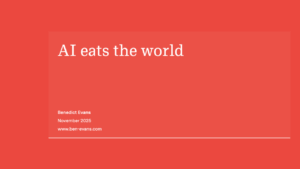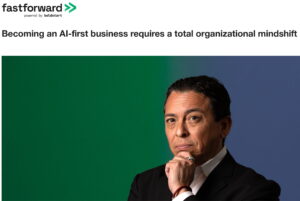by: Alex Forbes, QuickBase
For many companies, digital transformation can feel like a daunting task. Executives know it has to be a top priority, but the path to digital maturity can seem quite unclear, and it can be hard for change agents to know if they’re headed in the right direction.
Brian Solis is a principal analyst at the Altimeter Group and is also an award-winning author, prominent blogger and keynote speaker on the topics of digital transformation and innovation. He has spent years interviewing leaders to study the patterns, components, and processes that drive successful change.
Solis compiled his findings in a report, “The Race Against Digital Darwinism: Six Stages of Digital Transformation.” The report offers a maturity framework that makes the nebulous process of digital transformation much more tangible.
I had the opportunity to interview Solis and hear firsthand how his new model can help change agents be successful in the uphill battle to achieve digital maturity for their organization.
Digital transformation is not just about IT
Solis says that many leaders incorrectly assume that pursuing digital transformation is the job of the IT department. “If you were to follow the findings of many other reports, you would believe that the secret to digital transformation was all about technology and how the modernization of work was the key to success. The truth is that it’s a far more human story. There are changes happening to and because of people in your markets,” he says.
While modernizing processes and systems is important, digital transformation is not about technology, per se, but about updating and upgrading your organization’s ability to compete in a digital economy.
To that end, not only is digital transformation not about IT, but it may require organizations to actually create a new model for IT that divides the role into two functions. Solis says, “Often, IT splits into technology management (business as usual) and also takes on a more innovation-focused role of technology enablement to support new experiments and transformation initiatives.”
Digital transformation starts in unexpected places
Transformation is a tool, not a goal in and of itself. Change is always just a means to an end. When it all comes down to it, pursuing digital maturity is about re-orienting your organization to be agile, innovative, and customer-centric.
According to Solis, the case for change is often made by people in unexpected positions. He says, “Unless you’re working for Starbucks, Amazon, or Uber, change doesn’t often come from the top. Executives rarely say that they understand what it is that change agents are struggling with, what they are trying to do, and then instantly offer the dedicated budget and resources to help them drive transformation across the enterprise. This is why delivering the gift of empathy through what I call the ‘Undercover Boss’ method is essential.”
Solis explains that C-suite leaders often have such a “big picture” view that they sometimes struggle with understanding the need for change, adding, “You get what needs to be done. You live it every day. But executives, and especially boards, don’t live the brand the way you and your customers do.”
Once leaders understand that the status quo is not optimizing their organization’s ability to compete in the digital economy, getting buy-in for change is much easier. Solis says, “Digital transformation gains momentum once leadership has defined a vision for ‘what’ the change is, ‘why’ the company is changing, ‘what’s’ in it for everyone and ‘where’ the change will take place.”
He adds, “The key for a concerted effort to come together is that someone takes the lead and that someone, or a group of empowered and accountable individuals, collaborates to expand and scale their efforts across the enterprise.”
The role of change agents
If you are the one who is in the official or unofficial role of helping your organization pursue digital transformation, Solis says you’re in for a big challenge.
He says effective change agents have to take on the role of lawyer, storyteller, politician, and cheerleader. Like a lawyer, you need all the necessary evidence to back up your case for change. Like a storyteller, you need to present that evidence in a compelling way that stakeholders can believe in. Like a politician, you must unite people from different functions and executive roles to feel like they are part of the movement. Finally, like a cheerleader you need to get people excited. Solis says, “The team leading transformation requires constant validation and even group therapy.”






Leave a Reply